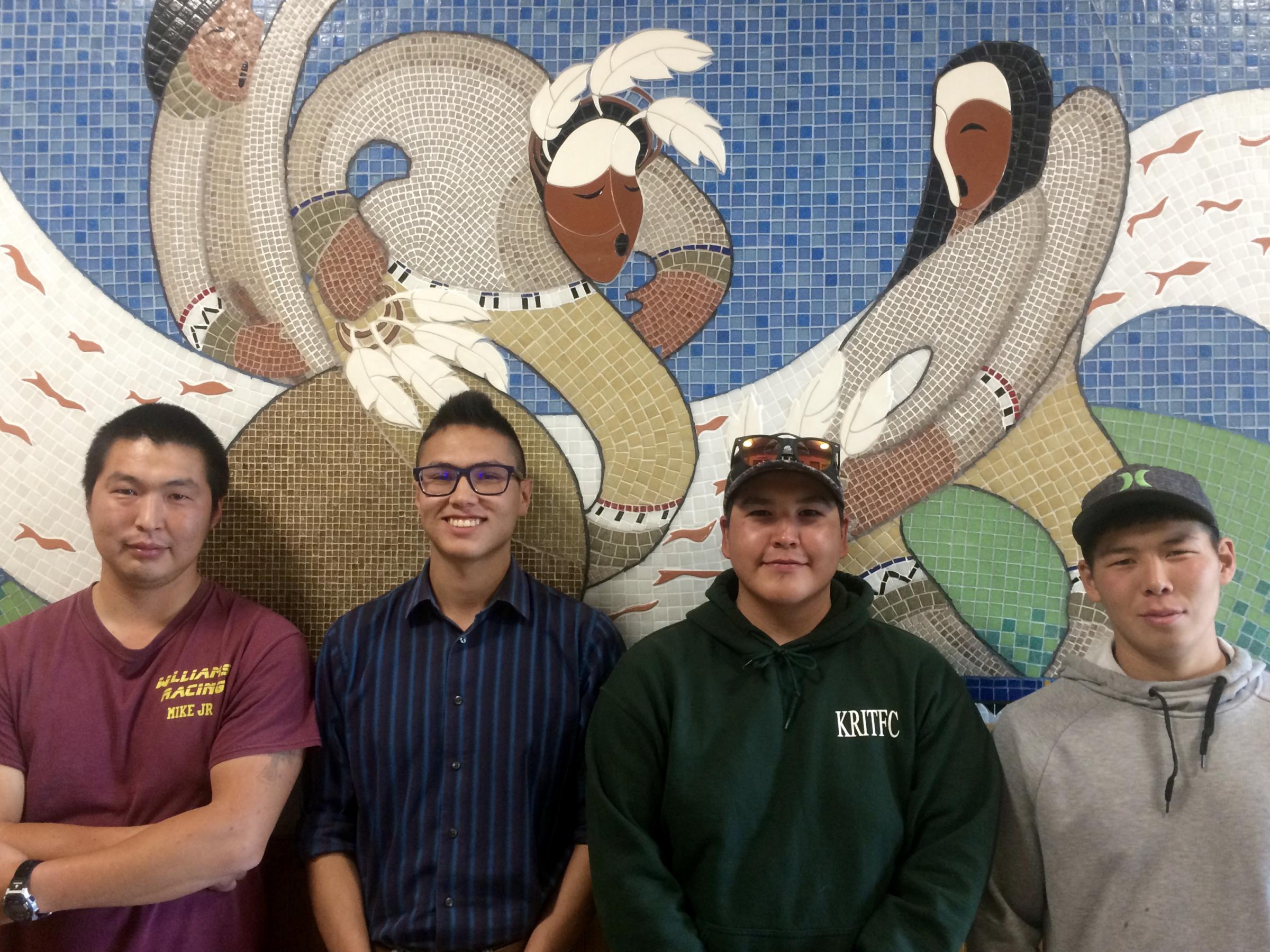
(Anna Rose MacArthur / KYUK)
Increased control over natural resources, like fish, is a top priority for Kuskokwim tribes. One way to move in that direction is through collecting harvest data during fishing season, which helps with the difficult job of in-season management.
Four young men take the floor to applause in front of a large gathering of Kuskokwim tribal representatives at the Kuskokwim River Inter-Tribal Fisheries Commission annual meeting. Missing from the group are two young women who couldn’t make the meeting: Cathy McIntyre and Colleen Andrew of Kwethluk. Each of the men and women served as community harvest monitors in their villages.
“I would wait at the boat landing where most of the fisherman were bringing in their fish,” Benjamin Agimuk explained. Agimuk collected data in Napakiak. “And I was interviewing fishermen on what their harvesting was like during the opening.”
Agimuk and the other monitors would ask fishermen how many fish of each species they caught, how long they were out, and what gear they used.
Akiak monitor Mike Williams Jr. said that some people found sharing the information inappropriate. It could be seen as bragging, and it’s not how some account for their harvest.
“They don’t really count the fish,” Williams said. “But rather look at the fish rack, and when it’s filled, then they’re done.”
But most fishermen would participate. And as the season went on, Napaskiak monitor Bernard Williams said that the fishermen would see him coming and just start talking.
“They’d give us the answers right away. They know what we’re going to say and do,” Williams said.
Monitors would also collect data on harvested king salmon: the age, sex, and length of each fish. And they’d write down comments like these from fishermen:
“We should keep the river open all summer.”
“Thank you for an opening.”
“We need to be conserving.”
The monitors would send the data to the U.S. Fish and Wildlife Service via a phone app. The feds would then crunch the numbers to help determine when managers could plan the next opening.
The program is organized through the Bering Sea Fishermen’s Association and is similar to other programs along the river. It’s meant to empower tribes, give them a clear view of their catch, increase access to harvest information, provide managers more accurate harvest data, and offer job and leadership training.
“There has to be a change on the Kusko because of all these closures,” Jackie Larson, age 19, said. Larson was a Napaskiak monitor. “So I might as well step in and learn so our people can have more chances to go out fishing.”
Four villages participated this year, with plans to expand to more villages next year. At that time, monitors will also collect water temperatures to track shifts related to climate change.
Anna Rose MacArthur is a reporter at KYUK in Bethel.




